096000 - Flooring
Floor Prep 02 Mitigating Concrete with Fiber - QN
- Corey S Zussman, AIA
- Link
When mitigating concrete floors with fiber, an extra step of burning the fiber is necessary in order to prevent moisture failure in the slab. When the fiber is not burned off the surface, the fiber will stick up above the concrete surface and wick the moisture from the slab.
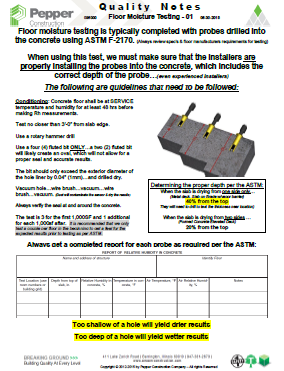
Floor Moisture Testing 101 - QN
- Corey S Zussman, AIA
- Link
Floor moisture testing is typically completed with probes drilled into the concrete using ASTM F-2170. (Always review spec's & floor manufacturers requirements for testing). When using this test, we must make sure that the installers are properly installing the probes into the concrete, which includes the correct depth of the probe (even experienced installers).
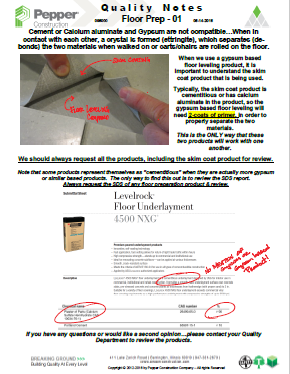
Floor Prep 01 Gypsum Leveling Compound - QN
- Corey S Zussman, AIA
- Link
Cement or calcium aluminate and gypsum are not compatible. When in contact with each other, a crystal is formed (ettringite), which separates (de-bonds) the two materials when walked on or carts/chairs are rolled on the floor. Some products represent themselves as “cementitious” when they are actually more gypsum or similar based products. The only way to find this out is to review the SDS report. Always request the SDS of any floor preparation product and review.

Carpet Protection - Issue 10a
- Corey S Zussman, AIA
- Link
Carpet protection is required per CRI. The type of carpet protection recommended by CRI is a non-staining building paper. Most projects use aplastic film with adhesive on the back side...The better we understandwhen the plastic protection can and should not be used will help avoidcostly mistakes down the road. Common concerns, such as how often to change the plastic protection, when can it be applied, can I apply it on any surface, will the protection void the warranty, etc. are question that I receive frequently and are discussed in this Quality Bulletin
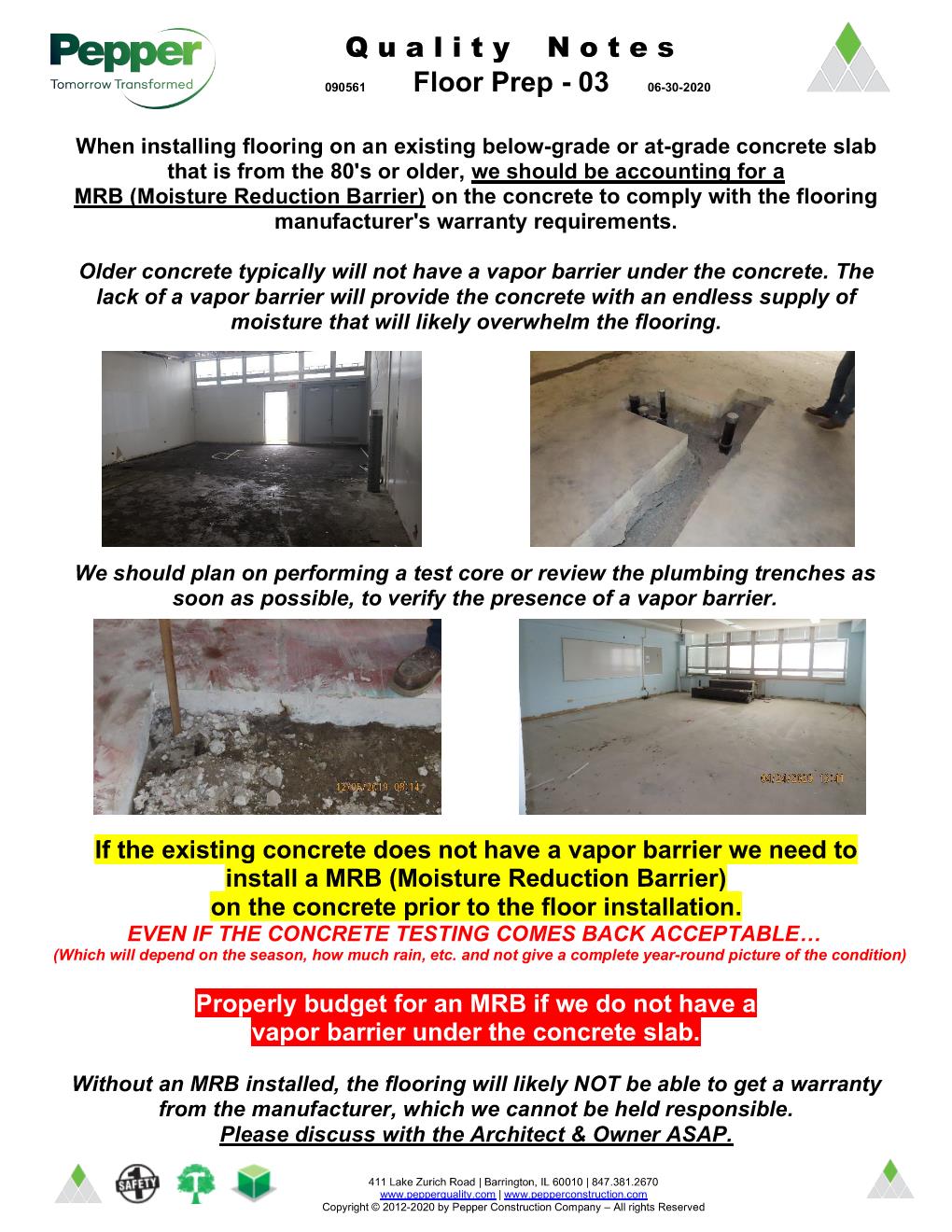
Floor Prep - 03 Missing Vapor Retarder under Concrete QN
- Corey S Zussman, AIA
- Link
When installing flooring on an existing below-grade or at-grade concrete slab that is from the 80's or older, we should be accounting for aMRB (Moisture Reduction Barrier) on the concrete to comply with the flooring manufacturer's warranty requirements.Older concrete typically will not have a vapor barrier under the concrete. The lack of a vapor barrier will provide the concrete with an endless supply of moisture that will likely overwhelm the flooring.

Floor Preparation / Floor Topping - 01 Issue 67
- Corey S Zussman, AIA
- Link
According to Sherwin Williams, 80% of all floor failures are related to floor prep and floor topping. Pepper has experienced the same percentage over the years. Floor prep and floor topping failures are Pepper’s most frequent failures. The failure costs and timing frequently far exceed the original cost of installing the floor prep and floor topping on the project. It is important to understand the preparation requirements, materials being installed, and limitations of the system. Please use this and other quality bulletins on this topic to better understand the risks and how to mitigate them for your project.
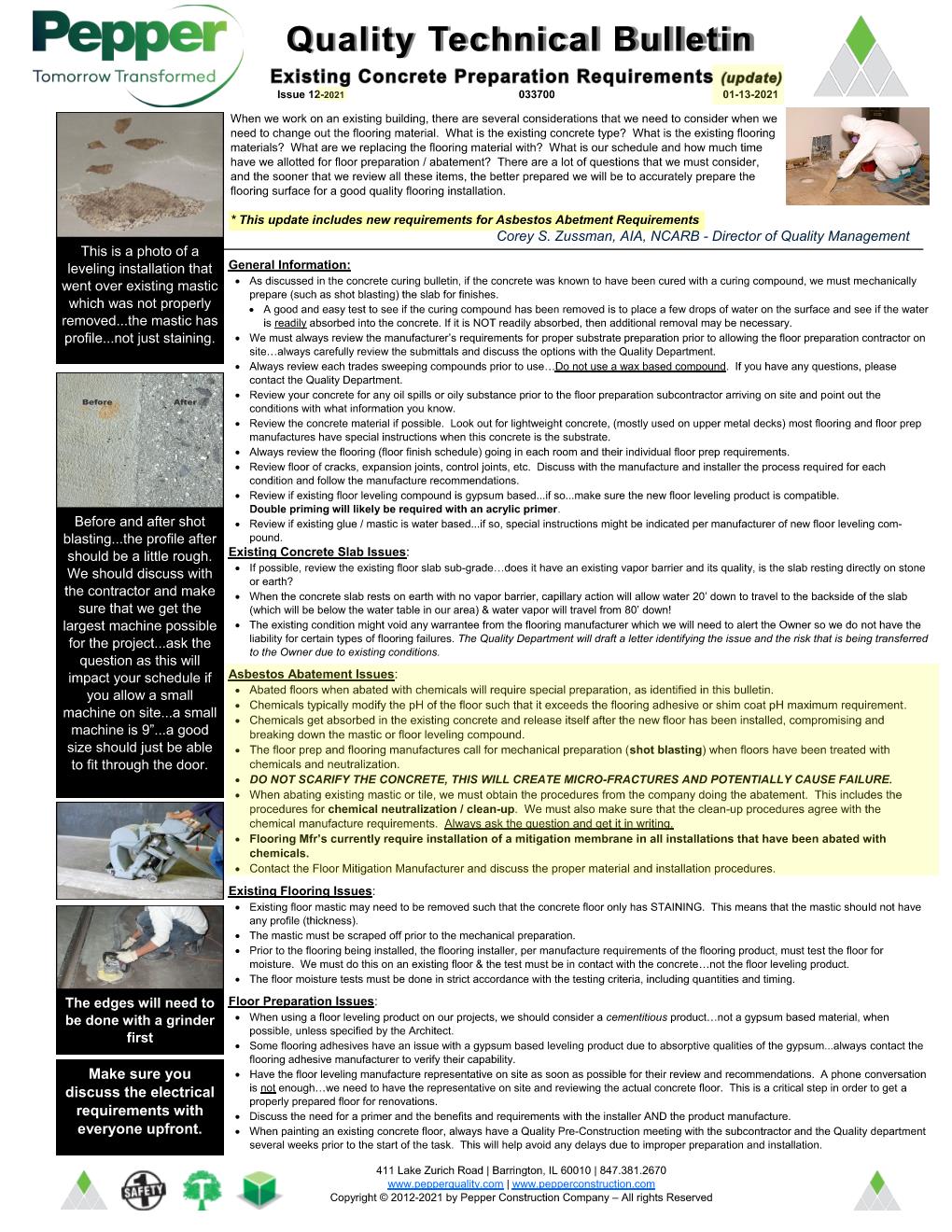
Existing Concrete Preparation Issue12
- Corey S Zussman, AIA
- Link
When we work on an existing building, there are several considerations that we need to consider when we need to change out the flooring material. What is the existing concrete type? What are the existing flooring materials? What are we replacing the flooring material with? What is our schedule, and how much time have we allotted for floor preparation/abatement? There are a lot of questions that we must consider, and the sooner that we review all these items, the better prepared we will be to accurately prepare the flooring surface for a good quality flooring installation.
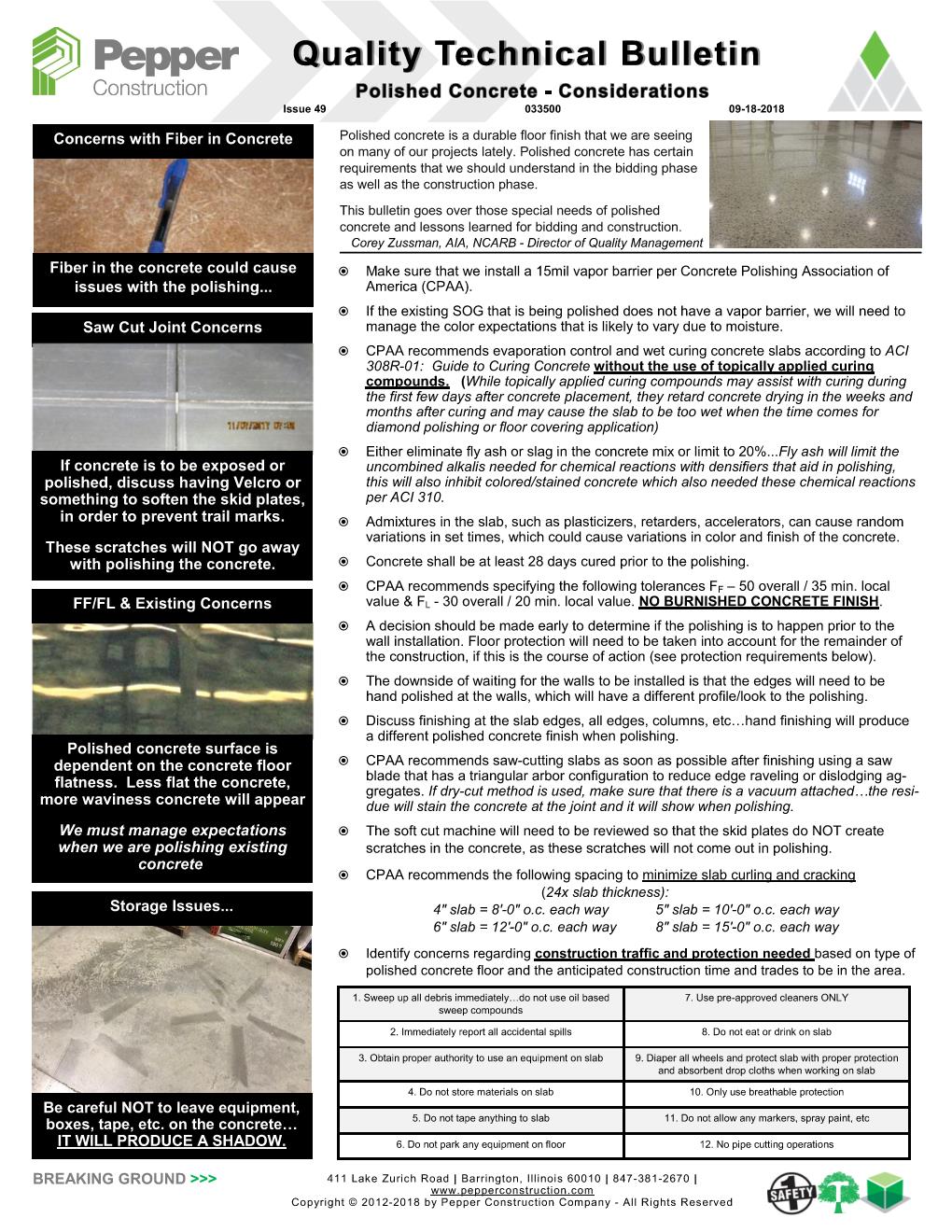
Polished Concrete Considerations Issue 49
- Corey S Zussman, AIA
- Link
Polished Concrete Considerations.
